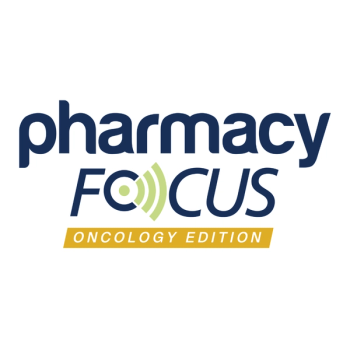
Pharmacy Practice in Focus: Oncology
- July 2020
- Volume 2
- Issue 3
Securing Specialty Oncology Contracts in a Data-Driven World
Data aggregation partners can provide value in their ability to pull clinical information from both the HSSP and electronic health records.
The ability of a health system specialty pharmacy (HSSP) to report real-world data consistently and accurately regarding all aspects of patient care is a critical factor in gaining access to today’s specialty medications. Data can be used to demonstrate cost, care coordination, and clinical outcomes to payers, while also providing manufacturers with insight into a patient’s adherence and overall experience on the therapy. Increasingly, it is incumbent on HSSPs to provide those data regularly and with a high degree of accuracy. If they lack the proper infrastructure to capture and report the data appropriately, they risk losing out on the growing number of specialty oncology contracts.
Fortunately, there is a solution.
Capturing and reporting meaningful data is a tedious process and can be challenging for health systems that are grappling with limited information technology resources as well as pressures to reduce waste, cut costs, and protect data security.
Choosing to engage a data aggregation partner enables HSSPs to achieve the data reporting capabilities they need to align with manufacturers’ and payers’ unique requirements on a broad scale. It also ensures reliable data reporting with the ability to increase volume through the data aggregator’s network benchmarking.
The Evolution of Specialty Oncology Contracts
Specialty contracts have evolved significantly over the years. In 1990, for instance, only 10 specialty drugs were on the market,1 and contracts at that time had few to no data reporting requirements. Since then, the specialty pharmaceutical market has skyrocketed to become the fastest-growing segment of pharmacy spend. It is predicted to grow from $336 billion in 2018 to between $475 billion and $505 billion across developed markets by 2023.2
As specialty drugs became more prevalent throughout the 1990s and early 2000s, manufacturers and payers developed an appetite for real-world data from pharmacies and providers. Within a number of disease categories, such as neurology and oncology, it became more critical to understand how long a patient remained on a therapy, any adverse events experienced, what the outcome was, and the total cost of care. Manufacturers subsequently began to standardize contracts and narrow product distribution channels in an effort to control and streamline the sources of patient data.
To gain access to distribution channels and secure specialty contracts in today’s landscape, health systems must possess robust data reporting capabilities to give manufacturers a holistic look into the treatment journey. Data aggregation partners are a valuable resource that makes meeting those data requirements— and thus expanding product access—more feasible.
Collaboration With a Data Aggregator
For many health systems, creating an in-house data analytics infrastructure to compile required patient data can be costly and time-consuming. Even for HSSPs that have robust internal data capabilities, the administrative burden can leave them lacking the resources to focus on their strategic operational and outcomes reporting. Data aggregation partners can provide value in their ability to pull clinical information from both the HSSP and electronic health records. The centralized data are then standardized to align with the manufacturers’ individual requirements, creating a comprehensive snapshot of care. Additionally, data aggregators can reproduce a range of data sets consistently and reliably, and they can work with health systems to do so for numerous medications from different manufacturers. By building robust data, aggregators can help increase access to specialty contracts, allowing HSSPs to retain prescriptions in-house and keep patients within the health system’s coordinated care ecosystem.
To note a recent example, UNC Health in North Carolina had been selected to participate in an exclusive specialty medication launch through an approved network-based data aggregator. The data aggregator held responsibility to onboard the approved network members to a standardized contract and implement a data feed from network members to the manufacturer. For specific medication launches, this type of arrangement has clear advantages. Manufacturers are able to minimize individual negotiations and contracts with pharmacy providers, and they can contract globally with the data aggregator to streamline the process.
This is key when product launches necessitate the use of local/regional pharmacy providers, such as those that have been designated by the National Cancer Institute as centers of excellence. In addition, network data aggregators hold network members accountable for maintaining certain standards of performance, which results in a consistent experience for patients receiving product from these pharmacies. Network data aggregators perform validation of network member data feeds during initial implementation to ensure quality and reliable data for manufacturers.
If the data aggregator is already managing a data feed on behalf of the pharmacy, new contracts require little or no additional data management. In this instance, upon contractual approval, the network data aggregator can simply direct the feed to the manufacturer. Additionally, the network data aggregator can advocate for existing data elements within agreed contracts with network members. This limits the time necessary to review, approve, and set up new contractual data exhibits.
Finally, network data aggregators may be able to utilize collective volumes across network members to arrange enhanced contractual benefits unavailable to a pharmacy through a direct-to-manufacturer contract.
Key Factors for Contractual Access to Specialty Oncology Products
To effectively expand access to specialty products, health systems must demonstrate the value they can provide beyond what a manufacturer is currently receiving. Ultimately, manufacturers want to understand how the partnership will further support the overall success of their product and provide insights for better decision-making in the future.
Among the top factors manufacturers consider when evaluating contracts for specialty products is speed to market, which is critical. Once approved, how quickly is that medication prescribed to patients? And, how quickly after being prescribed does the patient begin therapy?
Manufacturers also seek to understand how long a patient remains on therapy, any reasons for discontinuing, and the ultimate outcome of the intervention. Health systems operating in-house specialty pharmacies have an advantage when it comes to demonstrating speed to therapy and providing a comprehensive picture of the patient journey. The HSSP’s integrated clinical coordination with the full care team enables patients to begin therapy more quickly by filling prescriptions in-house and generates robust data on the full episode of care.
Manufacturers also take into account the sophistication and flexibility of a health system’s reporting capabilities when considering specialty contracts. HSSPs that work with data aggregators are well positioned to be nimble and fluid in what data they report and how the data are reported. As demonstrated by the UNC Health example, if a manufacturer needs to change or add a certain data element, it’s quicker to work through a data aggregator that can consistently apply the change across their network, rather than initiating updates with individual health systems. This is a valuable efficiency for manufacturers that are looking to award new contracts.
The Path Forward
While specialty medications are among the fastest-growing pharmacy channels, challenges remain with limited distribution networks and access to contracts. Collaborating with a centralized data aggregator may provide HSSPs certain advantages when seeking access to specialty medications. By compiling their outcomes data, real-world evidence, and patient experience measures, HSSPs and data aggregators can provide a convincing case to manufacturers and payers to expand access to specialty oncology products.
KATIE MCMILLEN, PHARMD, MPH, is vice president of operations at Integrated Health Outcomes Coalition (IHOC), an independent LLC formed by AmerisourceBergen. IHOC seeks to build partnerships among health systems, manufacturers, payers, and supply chain partners to support and improve the access, value, and delivery of specialty medications.JEFF REICHARD, PHARMD, MS, is the director of pharmacy, home delivery, and specialty pharmacy at UNC Health in North Carolina. He provides system leadership for home delivery and specialty pharmacy across the UNC Health enterprise. He received both his PharmD and MS from the UNC Eshelman School of Pharmacy. Reichard is an active member of the American Society of Health-System Pharmacists (ASHP) and the Hematology/Oncology Pharmacy Association.MARY-HASTON VEST, PHARMD, MS, is the clinical manager of analytics and outcomes services with UNC Health’s Department of Pharmacy, and she is assistant professor of clinical education at the UNC Eshelman School of Pharmacy in North Carolina. She leads the development of organizational approaches to integrate data analytics to effectively measure and positively impact patient outcomes, and to demonstrate the value of health system pharmacy. She received her PharmD from the University of Mississippi School of Pharmacy and her MS from the UNC Eshelman School of Pharmacy. She is an active member of the ASHP, American Colleges of Clinical Pharmacy, and the North Carolina Association of Pharmacists.
REFERENCES
- The growing cost of specialty pharmacy—is it sustainable? American Journal of Managed Care®. Published February 18, 2013. Accessed June 3, 2020. https://www.ajmc.com/payer-perspectives/0218/ the-growing-cost-of-specialty-pharmacyis-it-sustainable
- Seymore B. Taming the trend: managing costs of specialty pharmaceuticals for insurers. Pharmacy Times®. Published March 23, 2020. Accessed June 3, 2020. https://www.pharmacytimes.com/news/ taming-the-trend-managing-costs-of--specialty-pharmaceuticals-for-insurers
Articles in this issue
over 5 years ago
Assessment of Veliparib Treatment for Ovarian Cancer Typesover 5 years ago
A New Monoclonal Antibody for R/R MM: Isatuximab-irfcover 5 years ago
Rare Pharmacy Emerges From Specialty: Part 1over 5 years ago
Combination Therapy Demonstrates Promising Antitumor ActivityNewsletter
Stay informed on drug updates, treatment guidelines, and pharmacy practice trends—subscribe to Pharmacy Times for weekly clinical insights.













































































































































































































